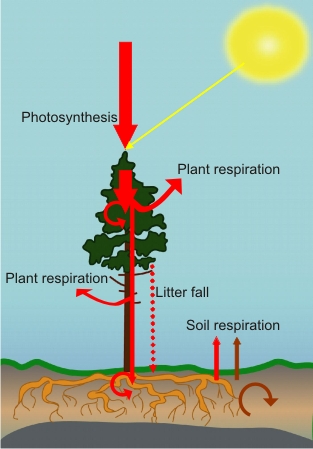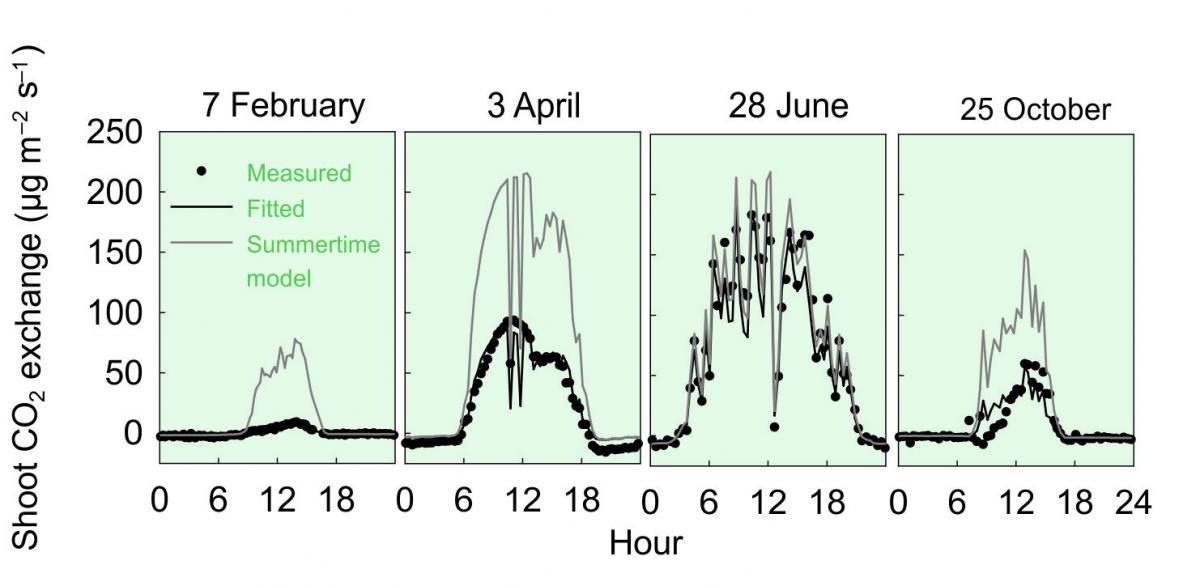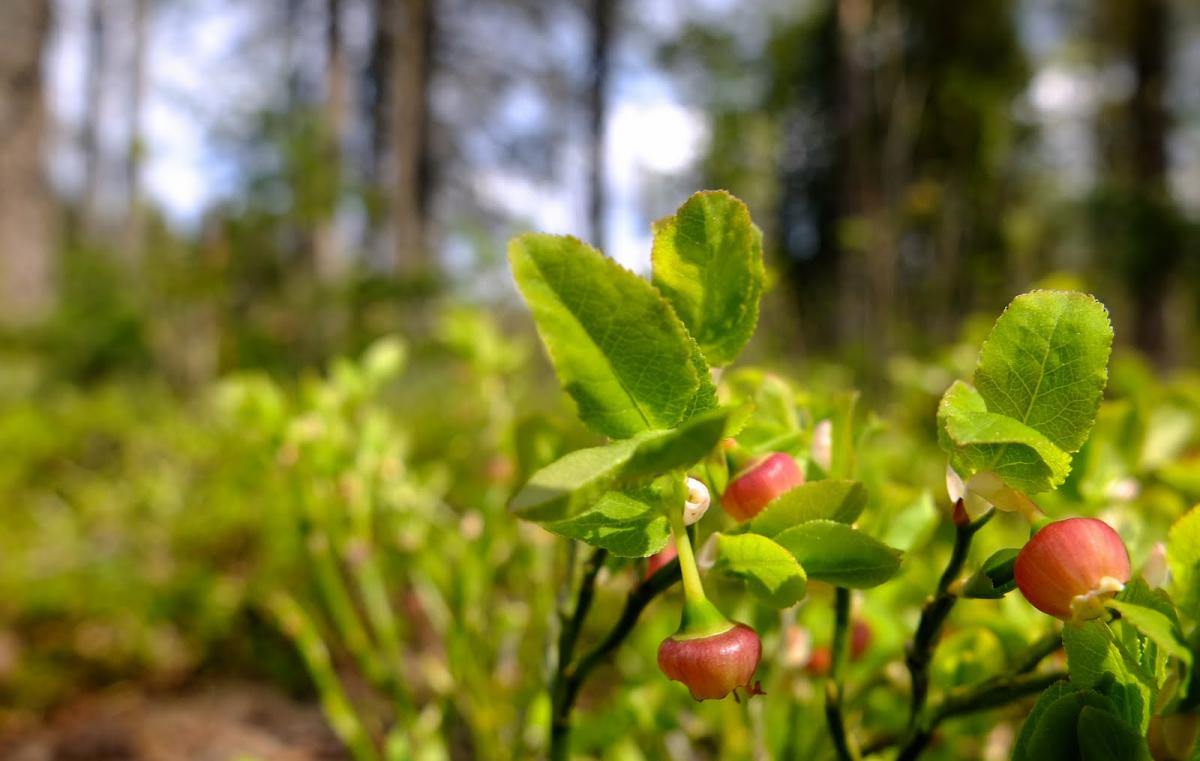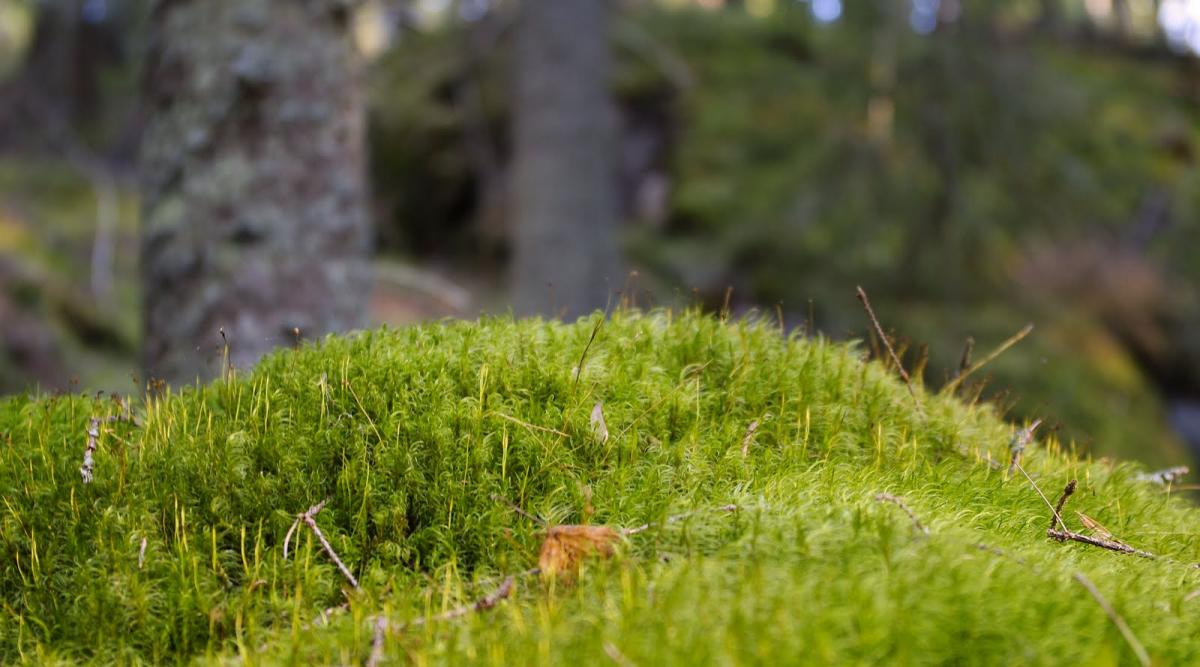The capture and release of carbon dioxide (CO2) by the forest is the net result of many biological processes.
The green parts of plants perform the first and most important step in the carbon capture via the photosynthesis. Plants can use the energy from sunlight to transform the atmospheric carbon dioxide into organic molecules. These molecules become the building elements for growth and the basic material to maintain existing components of vital functions. Roughly half of the dry biomass of plants is made up of carbon molecules.
As plants grow, carbon becomes locked as part of the accumulating plant biomass. In trees, approximately half of the carbon bound in photosynthesis is used for construction of new biomass. Part of this biomass is allocated to long-lived stem, branches and coarse roots; the rest is seasonally shed as falling fruits, needles, branches or bark and discarded roots. This organic material is slowly decomposed by the soil microbiota, releasing carbon dioxide back to the atmosphere. The same happens with the biomass of the whole plant when it dies. Thus, as plants die, some of the carbon becomes locked in the soil.
At the same time, as carbon-locking processes take place, some of the carbon returns back to the atmosphere as respired carbon dioxide from plants as well as soil microbiota. Respiration is the basic cellular process to obtain chemical energy from the oxidation of organic molecules, and CO2 results as a waste product of the overall metabolism. Generally, about half of the caught carbon is released in respiration.
Canopy
Plant leaves such as needles retain the carbon dioxide by the process of photosynthesis and release it by the process of respiration. Photosynthesis needs light, whereas respiration happens both in light and dark. Both processes are strongly affected by temperature and water availability.
When there is enough light and the air temperature is above zero, we can see photosynthesis as a flow of carbon dioxide molecules towards the crown: carbon dioxide enters needles through the pores located at the needle surface (the stomata). At the same time, we can see carbon dioxide being released out of the canopy. This carbon dioxide is produced in respiration. When it is dark, the only flow of CO2 comes from respiration and it is thus outwards from the canopy.
Trunk
The tree mostly release carbon dioxide due to the respiration of the living cells in its interior. In some part of the stems, some photosynthesis may also happen. Trunk respiration is most affected by temperature. On a sunny day, the bark of the tree may become warmer than the surrounding air, producing a rise in CO2 outflow from the trunk.
Ground vegetation
Boreal forests have a vegetation structure that consists of the trees. It also has of a diverse layer of ground vegetation that photosynthesizes, transpires and respires similarly to trees but the volumes are smaller due to the smaller sizes of ground vegetation and diminished light environment at the ground level. Low shrubs and mosses predominate the ground level in mature forests such as in our measuring site. In addition, some grasses and herbs also exist.
Roots and soil
Trees may allocate almost one-third of the total biomass to the roots. Roots provide the physical anchorage of the tree to the soil and its main activity is the absorption of water and inorganic nutrients. The uptake and transport of ions, together with growth and maintenance of roots themselves need energy, and thus, root respiration releases CO2 to the soil and into the air. In addition to plant roots, a complex soil microbiota lives below ground. Their activity results in the release of carbon dioxide to the soil, which flows out to the atmosphere. More than half of the total respiration in the soil may be respired from this soil microbiota, which is responsible for the decomposition of litter and in general, all dead organic matter in the soil. Soil temperature and moisture heavily influence the activity of roots and microbes. Soil respiration is highest in warm and moderately moist soil.



